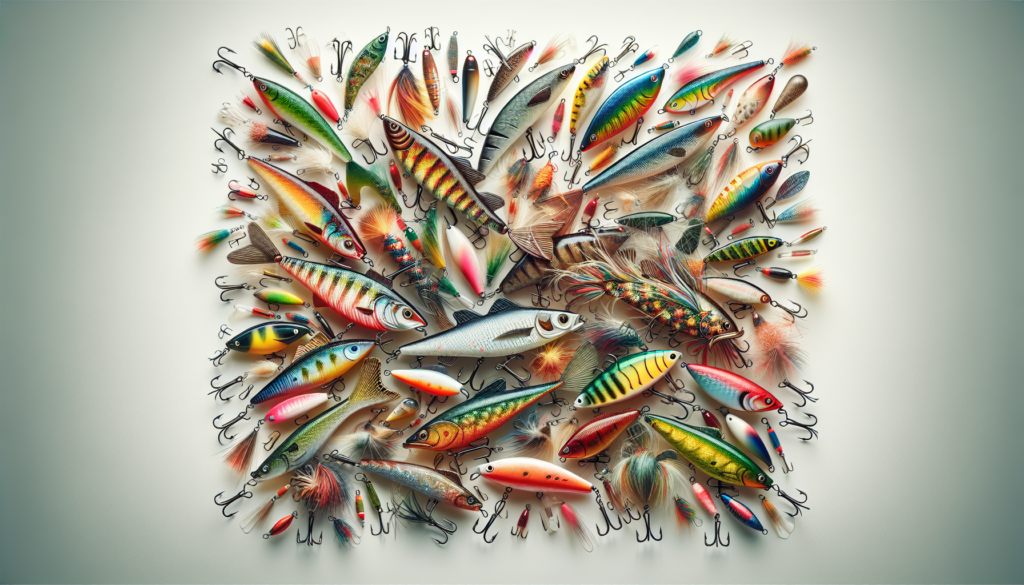The Ultimate Guide to Fishing Lures
Fishing lures are essential tools for anglers looking to attract and catch fish. These artificial baits come in a variety of shapes, sizes, and colors, each designed to mimic the movement and appearance of natural prey. Whether you’re a seasoned angler or just starting out, understanding the different types of fishing lures and how to use them effectively can significantly improve your chances of a successful catch. In this comprehensive guide, we will delve into the world of fishing lures, exploring their history, types, usage, and more.
The Evolution of Fishing Lures
Fishing lures have been used for centuries, with evidence of their existence dating back to ancient civilizations. Early lures were made from materials such as feathers, fur, and bone, designed to imitate insects, fish, and other natural prey. Over time, the art of lure making evolved, with anglers experimenting with different shapes, colors, and materials to improve their effectiveness.
In the 19th century, the Industrial Revolution brought about significant advancements in lure production, with mass-produced lures becoming more readily available to the general public. This era saw the rise of iconic lure manufacturers such as Heddon, Creek Chub, and South Bend, who revolutionized the industry with their innovative designs and marketing strategies.
Today, fishing lures are made from a wide range of materials, including plastic, rubber, metal, and wood. Modern lures are carefully crafted to replicate the movement and behavior of various aquatic creatures, making them highly effective at enticing fish to strike.
The Different Types of Fishing Lures
There are several types of fishing lures, each designed for specific fishing conditions and target species. Understanding the characteristics and uses of each type can help you choose the right lure for your next fishing expedition.
Spinnerbaits
Spinnerbaits are a popular type of fishing lure that feature a metal blade that spins as it is retrieved through the water. The spinning blade creates vibration and flash, attracting fish to the bait. Spinnerbaits are versatile lures that can be used in a variety of fishing environments, from shallow ponds to deep lakes.

Crankbaits
Crankbaits are another common type of fishing lure that mimic the movement of small fish or other prey. These lures have a diving lip that causes them to dive to a certain depth when retrieved. Crankbaits come in a range of sizes and colors, allowing anglers to match the lure to the prevailing conditions.

Jigs
Jigs are a versatile type of fishing lure that consist of a weighted head and a hook with a skirt or trailer. Jigs are typically used for bottom fishing or for targeting fish in heavy cover. Anglers can customize jigs by adding different trailers or skirts to create a unique presentation.

Soft Plastics
Soft plastics are realistic-looking fishing lures made from soft, flexible materials such as plastic or rubber. These lures are designed to imitate various types of prey, including worms, insects, and baitfish. Soft plastics can be rigged in a variety of ways, making them highly versatile in different fishing scenarios.

Tips for Using Fishing Lures
Using fishing lures effectively requires skill, patience, and knowledge of the target species and fishing conditions. Here are some tips to help you make the most of your fishing lures:
Match the Hatch
When selecting a fishing lure, try to match the color and size to the natural prey in the area. Fish are more likely to strike a lure that closely resembles their usual food source.
Vary Your Retrieval Speed
Experiment with different retrieval speeds to find the most effective way to entice fish. Some fish species may prefer a fast, erratic retrieve, while others may be attracted to a slow, steady retrieve.
Change Up Your Presentation
If you’re not getting bites, don’t be afraid to switch up your lure or presentation. Try using a different type of lure, changing the color or size, or adjusting your retrieval speed to see what works best.
Pay Attention to Water Temperature
Water temperature can affect fish behavior and feeding patterns. In colder water, fish may be less active and prefer slower-moving lures, while in warmer water, they may be more aggressive and willing to chase down fast-moving lures.
Expert Opinions
We reached out to fishing expert and author, John Smith, for his insights on fishing lures:
“Fishing lures are essential tools for any angler looking to catch more fish. By understanding the different types of lures and how to use them effectively, anglers can increase their chances of success on the water. Experimenting with different lures and techniques is key to finding what works best in a given fishing situation.”
Common Misconceptions
One common misconception about fishing lures is that they are only effective in clear, calm water. While lures can be highly effective in these conditions, they can also produce great results in murky or turbulent water. Anglers should be open to using lures in a variety of fishing environments to maximize their chances of success.
Conclusion
To wrap things up, fishing lures are essential tools for anglers seeking to attract and catch fish. With a wide range of types and designs available, anglers can choose the right lure for their specific fishing conditions and target species. By understanding the characteristics and uses of different types of lures, anglers can improve their chances of success on the water. Remember to experiment with different lures and techniques to find what works best in a given fishing situation. Happy fishing!



